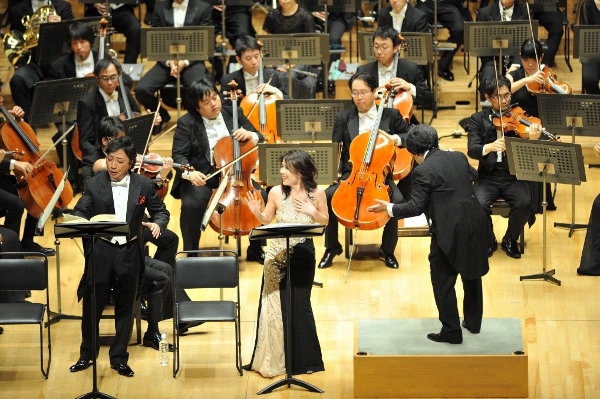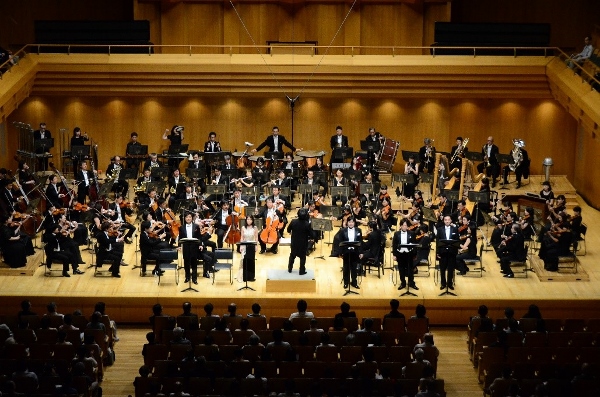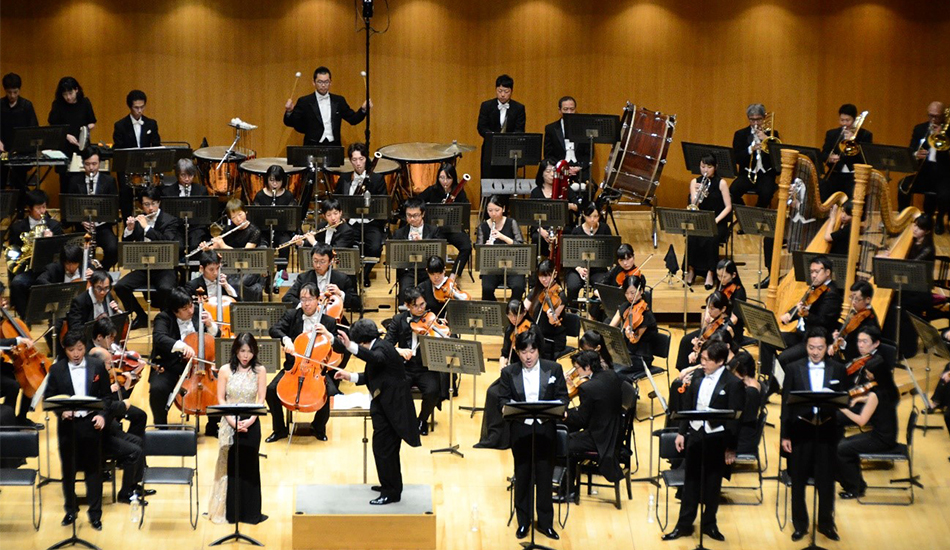Support Your Local Orchestra
Published: October 3, 2018
Did you know that Koto Ward has its very own philharmonic orchestra, whose home is at Tiara Koto, in Sumiyoshi 2-chome?
I recently attended one of their concerts, held at Tokyo Opera City Concert Hall in Shinjuku, where the orchestra performed Mozart’s Symphony No.39 in E flat major, K.543 and the concert-style version of Ravel’s one act opera “L’ Heure Espagnole”.
Being more of a jazz fan, I asked Ms. Yumi Tomochika, from the orchestra’s public relations and marketing department, to give me some background about Tokyo City Philharmonic Orchestra and to take me through the day’s programme.
The orchestra, which was founded in 1975, began its long relationship with Koto Ward in 1994. Currently, all the members are professional musicians and the orchestra is funded by a combination of concert ticket sales, fees from performances at the request of other groups, sponsorship by companies and individuals and by donations. The orchestra has a very busy schedule, performing over 100 concerts annually across Japan, and occasionally travelling abroad by invitation; in fact, Ms. Tomochika told me that their next overseas concert will take them to Vladivostok and St. Petersburg, Russia, in March 2019. I only hope that they wrap up warmly for the visit.

The music for each concert is chosen by the conductor in consultation with the orchestra’s management, and whilst each current conductor sets the flavour of a concert programme, Ms. Tomochika said that the repertoire chosen by Tokyo City Philharmonic Orchestra aims to appeal to all ages and genders, and ranges from major compositions which everybody has heard somewhere before, to pieces of music which may be new to listeners, but which it is hoped they grow to love.
Not all the music performed by the orchestra is classical; they also annually hold a concert performing tunes from the Dragon Quest game. And Ms. Tomochika laughingly told me that in 2017 they held a performance of music from the Star Wars films, which proved to be very popular. And I bet very few people realise that the sound track music for the Studio Ghibli film Mononokehime (Princess Mononoke) was by the Tokyo City Philharmonic Orchestra.
And the performance at Tokyo Opera City Concert Hall? The concert hall is an intimate, airy building decked out in light wood, with a ceiling which tapers off like the inside of a pyramid. Sitting waiting for the concert to begin, I was fascinated watching the various musicians wander onto the stage to tune his or her instrument. First came the owners of the drums and the contrabass, and they were then joined by the bassoon and cello players. Soon everyone was on stage tuning up, and it was enjoyable listening to the sounds gradually come together in harmony. The conductor, Mr. Ken Takaseki, then strolled onto the stage and proceeded to give a short informal talk on the background and nature of the two pieces in the day’s programme.

The concert then began. It was very relaxing sat listening to this melodic Mozart symphony, with its build-up of repeated themes and rising crescendos, and watching all the string section in unison, leaning forward in concentration as the music gathered speed and volume. This was light, cheerful music and it had my feet tapping to the rhythm of Mozart’s beat.
This was followed by Ravel’s “L’Heure Espagnole”, a short comedy opera about the attempted infidelity by the wife of a Spanish clock shop owner, with the vocals performed by five visiting soloists, who threw hearts and souls into projecting their voices across the auditorium. Although it was sung in French, a digital translation in Japanese flashed across a screen positioned above the stage, making the plot easy to follow.

Amusing touches were created by the orchestra, such as having metronomes ticking at the beginning of the performance, and whilst there were no actual grandfather clocks on stage, the timpani, glockenspiel and piccolo amply described the clocks in action, whilst the drums vividly portrayed the muleteer carrying the grandfather clocks, containing her lovers, up and down the stairs for the errant wife.

These two pieces together made an enjoyable couple of hours listening, and the audience, consisting of a range of ages, appeared to enjoy the two performances – certainly the applause was loud and long.
I came away from the concert thinking it was rather an entertaining way to spend an afternoon. So, whether or not you are a lover of classical music, why not come along to one of Tokyo City Philharmonic Orchestra’s concerts? Go on, give it a try and support your local orchestra!

Story by Jeremy Hutchinson
All photographs: Tsutomu Kaneko


